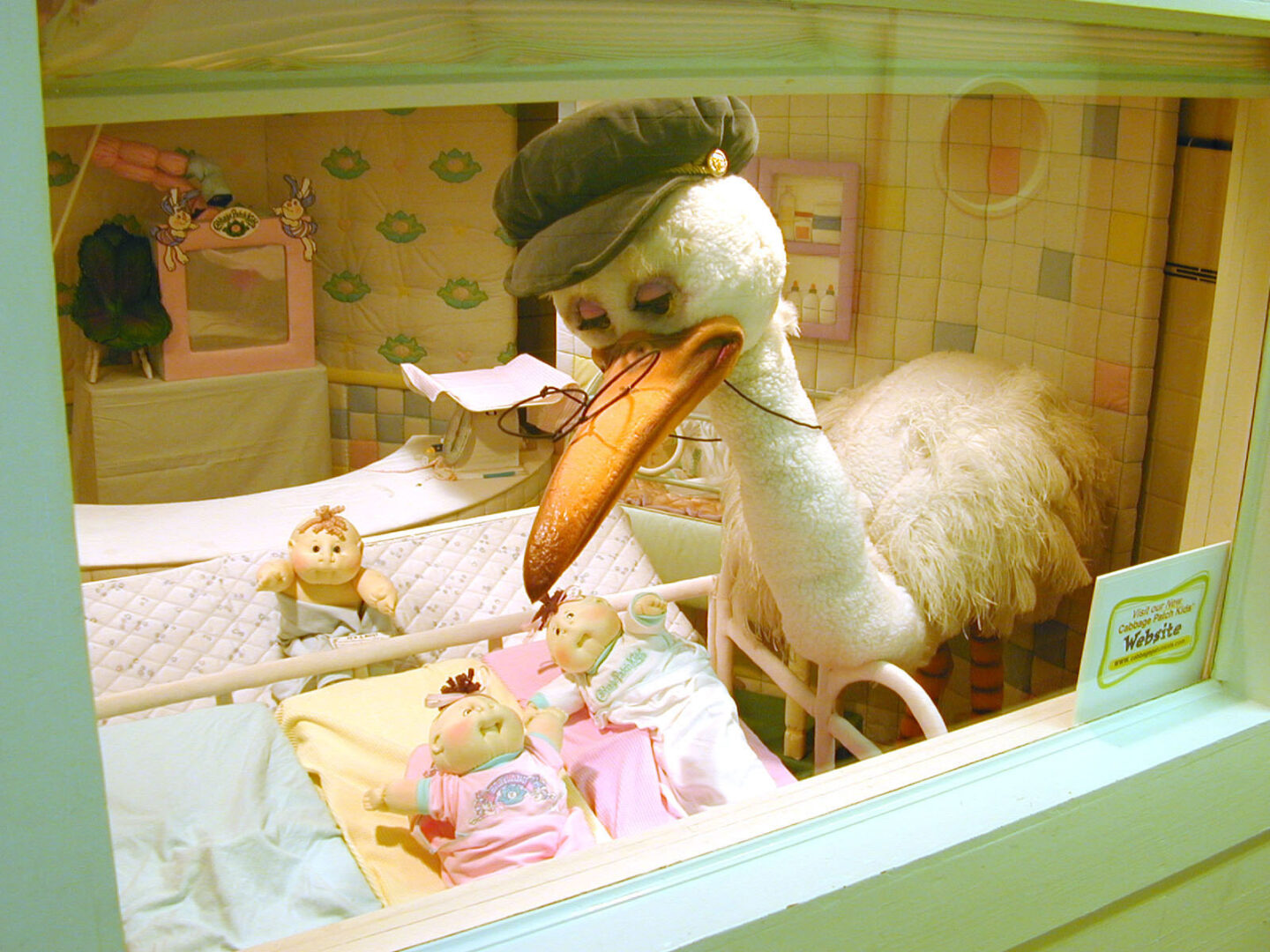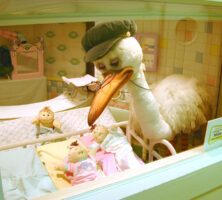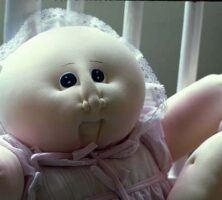Babyland General Hospital, known worldwide as the birthplace of the hand-stitched, original Cabbage Patch Kids, is located in Cleveland, seventy-five miles northeast of Atlanta in the Blue Ridge Mountains of northeast Georgia. Named one of the Travel Channel’s Top Ten Toylands in 2004, Babyland General is partly a doll museum and partly a gift shop.
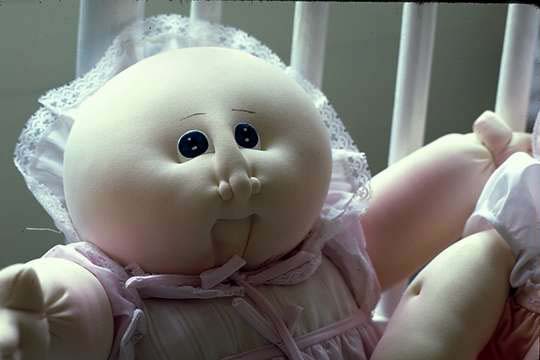
Courtesy of Georgia Department of Economic Development.
Cleveland native Xavier Roberts developed the concept for the dolls in 1977, while studying the Appalachian craft of soft-sculpture as an art student at Truett-McConnell College. He began to sell the dolls at local craft shows and in gift shops in Cleveland, a mountain town with significant tourist traffic. By 1978 his business was beginning to boom, and in 1979 he opened a store in a turn-of-the-century medical clinic located near downtown.
In 1983 Roberts signed a merchandising arrangement with a toy company, Coleco, to begin mass production of what would be called “Cabbage Patch Kids.” The dolls became a major fad of the 1980s and are considered to be the most successful doll introduced in the history of the toy industry. By 1990 about 65 million Cabbage Patch Kids had been “adopted.”
The primary marketing technique for the Cabbage Patch Kids involves the idea that customers are not “buying” the dolls but “adopting” them. When prospective doll owners enter the Babyland General building, they are greeted in the reception area by a person wearing medical scrubs. All Babyland staff, in fact, wear medical scrubs while working. The hospital motif continues throughout the building, which includes a maternity ward and a “preemie” maternity ward, complete with Cabbage Patch Kids in incubators.
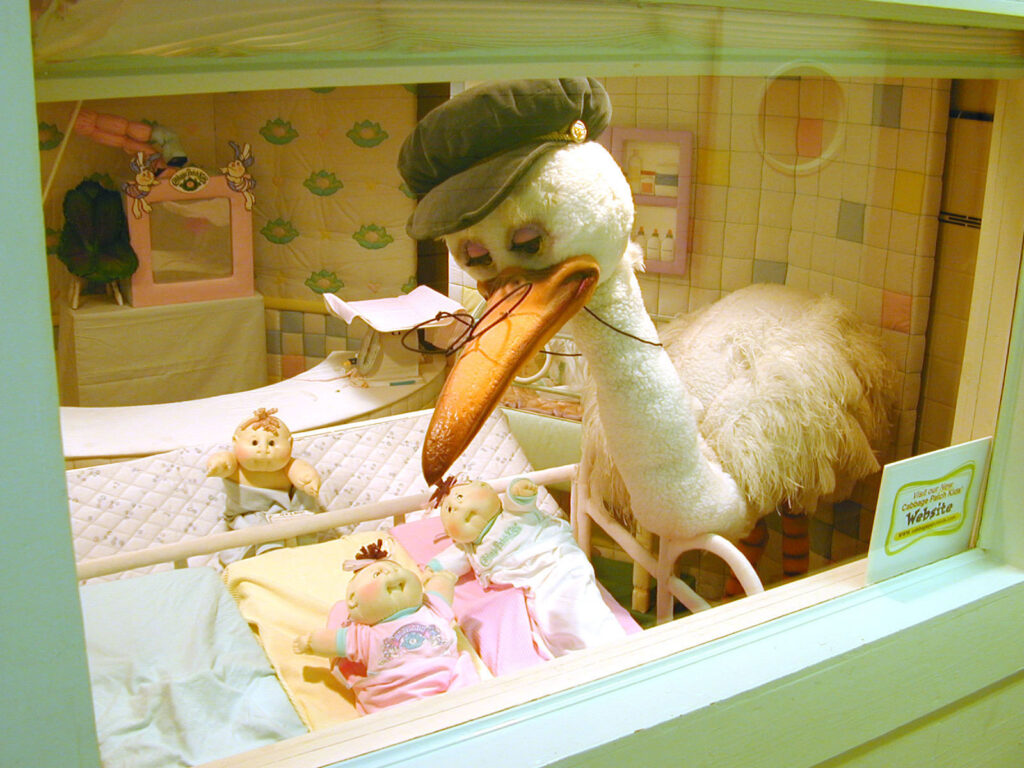
Courtesy of Babyland General Hospital, Cleveland
Every room in Babyland displays a multitude of Cabbage Patch Kids, most of which are available for purchase, along with detailed adoption information. Additionally, display cases between each room house dolls from different eras, providing a historical overview of the phenomenon. Another important component of Babyland General is the “Magic Crystal Tree,” underneath which five Cabbage Patch Kids are “born” every hour. Visitors are encouraged to offer names for each doll, and these names are placed on the doll’s adoption papers.
Although sales of Cabbage Patch Kids have declined since the 1980s, Babyland General still flourishes as a major tourist attraction in northeast Georgia. In 1999 the dolls were selected by a nationwide public vote to appear on a U.S. postage stamp, as part of a program commemorating the 1980s.





